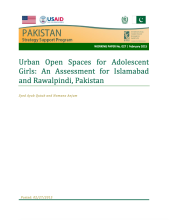Land Library
Welcome to the Land Portal Library. Explore our vast collection of open-access resources (over 74,000) including reports, journal articles, research papers, peer-reviewed publications, legal documents, videos and much more.
/ library resources
Showing items 1 through 9 of 94.Land is an important asset for rural households, and having secure land rights is important for poverty reduction.
This report first reviews how inequality in land distribution has reached extreme levels in Colombia.
Luego de 45 años, en Colombia se realizó un nuevo Censo Agropecuario en 2014, cuyos resultados fueron publicados en varias entregas parciales. A finales de 2016, el Departamento Administrativo Nacional de Estadística (DANE) entregó los microdatos completos del censo.
Women cocoa farmers are central to the sustainability of the cocoa supply chain and cocoa-growing communities. Too often unrecognized and undervalued, women’s labor makes significant contributions to the amount of cocoa produced, which is under increasing demand.
Concluímos preliminarmente que oferecer treino em gestão sustentável das terras (GST) aos agricultores de contacto típi-cos e fazer com que mantenham lotes de demonstração na comunidade tinha, no geral, um impacto reduzido na aprendiza-gem e na adoção de práticas de GST.
Gender disparities continue to exist in women’s control, inheritance, and ownership of land in spite of legislation directing improvements in women’s land access.
Urban open spaces are valued for their health, social, economic, and environmental benefits. Outdoor physical activity is important for the wellbeing of youth, while playfulness is crucial for creativity and innovation.
In the context of increasing vulnerability to climate change for people dependent on natural resources for their livelihoods, the International Food Policy Research Institute and partner organizations in Ethiopia, Kenya, Mali, and Bangladesh undertook a project broadly aiming to create knowledge
Although there is ample evidence of differences in how and where men and women acquire information, most research on learning and household decisionmaking only considers access to information for a single, typically male, household head.







